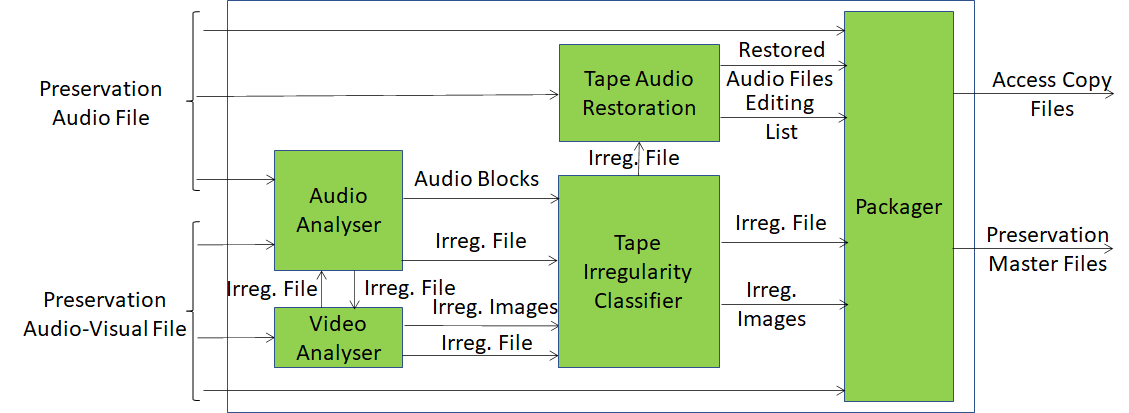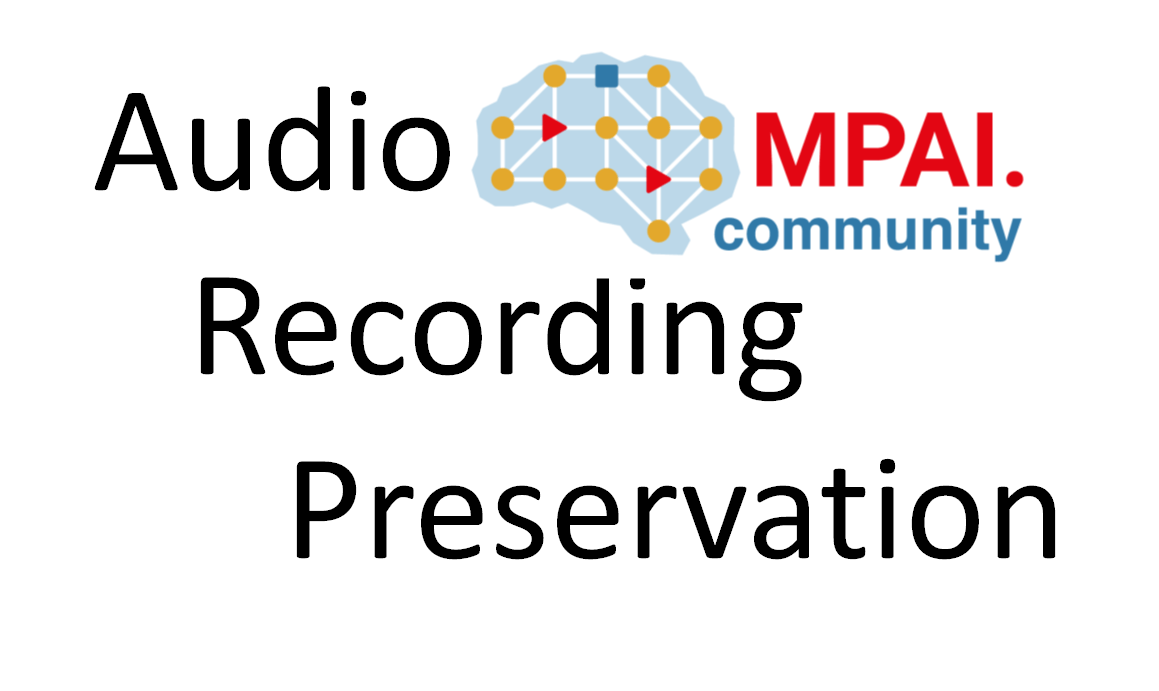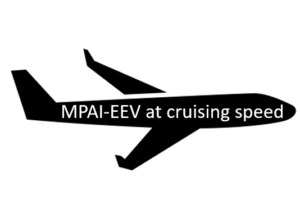Another context of MPAI Audio Enhancement is preservation. Many audio archives urgently need to digitise their records, especially analogue magnetic tapes, because of their life expectancy is short if compared to paper records. International institutions (e.g., International Association of Sound and Audio-visuals Archives, IASA; World Digital Library, WDL; Europeana) have defined guidelines, sometimes only partly compatible, but appropriate international standards are lacking.
The Audio Recording Preservation (ARP) use case of the MPAI-CAE standard (CAE-ARP) opens the way to effectively respond to methodological questions of reliability with respect to audio recordings as documentary sources, while clarifying the concept of “historical faithfulness”. The magnetic tape carrier may hold important information: multiples splices; annotations (by the composer or by the technicians) and/or display several types of irregularities (e.g., corruptions of the carrier, tape of different colour or chemical composition).
AI can have a significant impact on cultural heritage because it can make its safeguarding sustainable by drastically changing the way it is preserved, accessed, added value. Audio archives, an important part of this heritage require important resources in term of people, time, and funding.
An important example of how AI can drastically reduce the resources necessary to preserve and make accessible analogue recordings is provided by CAE-ARP providing a workflow for managing open-reel tape audio recordings. It focuses on audio read from magnetic tapes, digitised and fed into a preservation system together with the data from a video camera pointed to the head reading the magnetic tape. The output of the restoration process is composed by a preservation master file that contains the high-resolution audio signal and several other information types created by the preservation process. The goal is to cover the whole “philologically informed” archival process of an audio document, from the active preservation of sound documents to the access to digitised files.
Figure 1 depicts the CAE-ARP workflow. Its operation is concisely described below.

Figure 1 – Audio recording preservation
- The Audio Analyser and Video Analyser AIMs analyse the Preservation Audio File (a high-quality audio signal) and the Preservation Audio-Visual File (video of the reading head).
- All detected Audio and Image irregularities are sent to the Tape Irregularity Classifier AIM, which selects those most relevant for restoration and access.
- The Tape Audio Restoration AIM uses the irregularities to correct potential errors occurred at the time the audio signal was analogue-to-digital converted.
- The Restored Audio File, the Editing List (used to produce the Restored Audio File, the Irregularity Images, and the Irregularity File containing information about the irregularities) are inserted in the Packager.
- The Packager produces the Access Copy Files. These are used, as the name implies, to access the audio content and the Preservation Master Files, with the original inputs and data produced during the analysis, used for preservation.
The ARP workflow described above is complex and involves different audio and video competences. Therefore, the MPAI approach of subdividing complex systems in smaller components is well-suited to advance different algorithms and functionalities typically involving different professionals or companies.
Currently, ARP is limited to mono audio recordings on open-reel magnetic tape. The goal is to extend it to more complex recordings and additional analogue carriers such as audiocassettes or vinyl.


